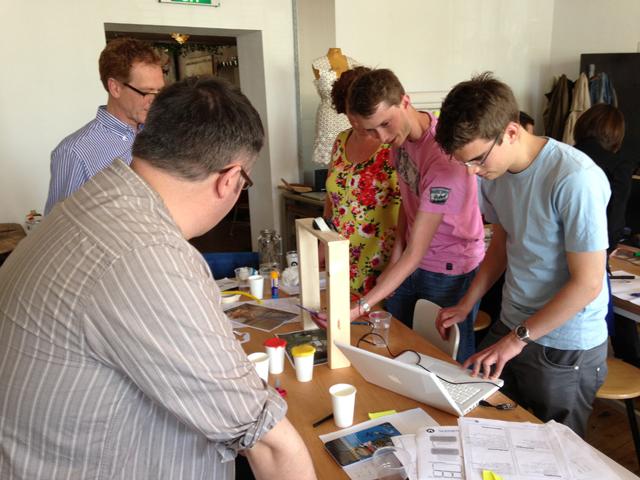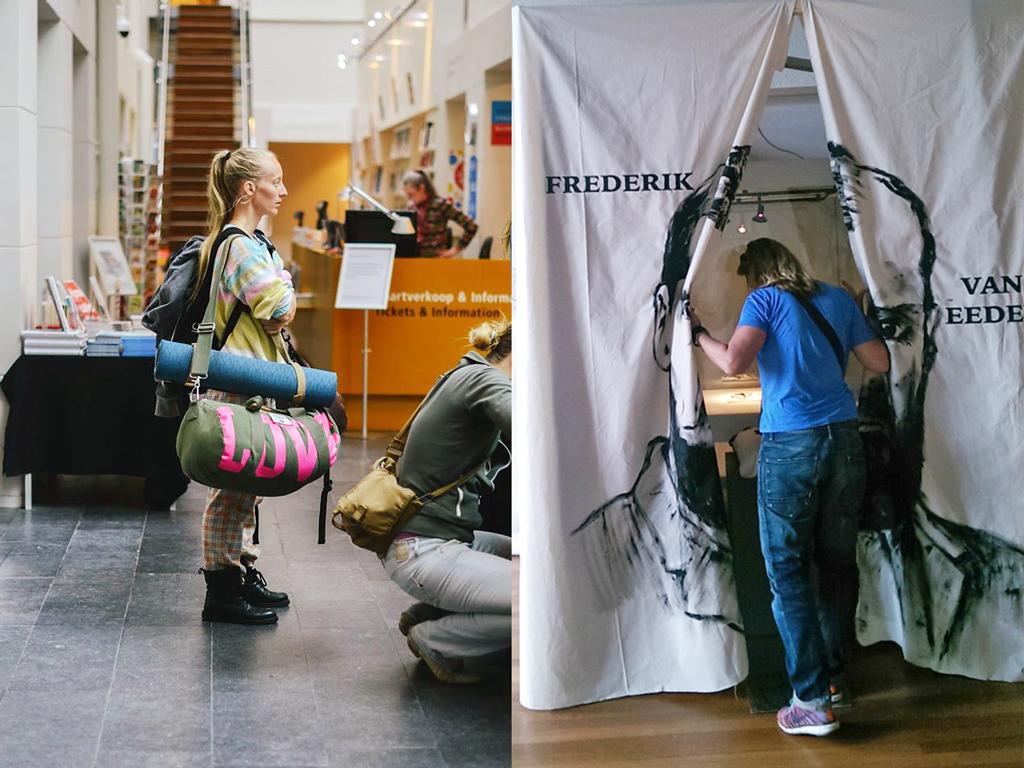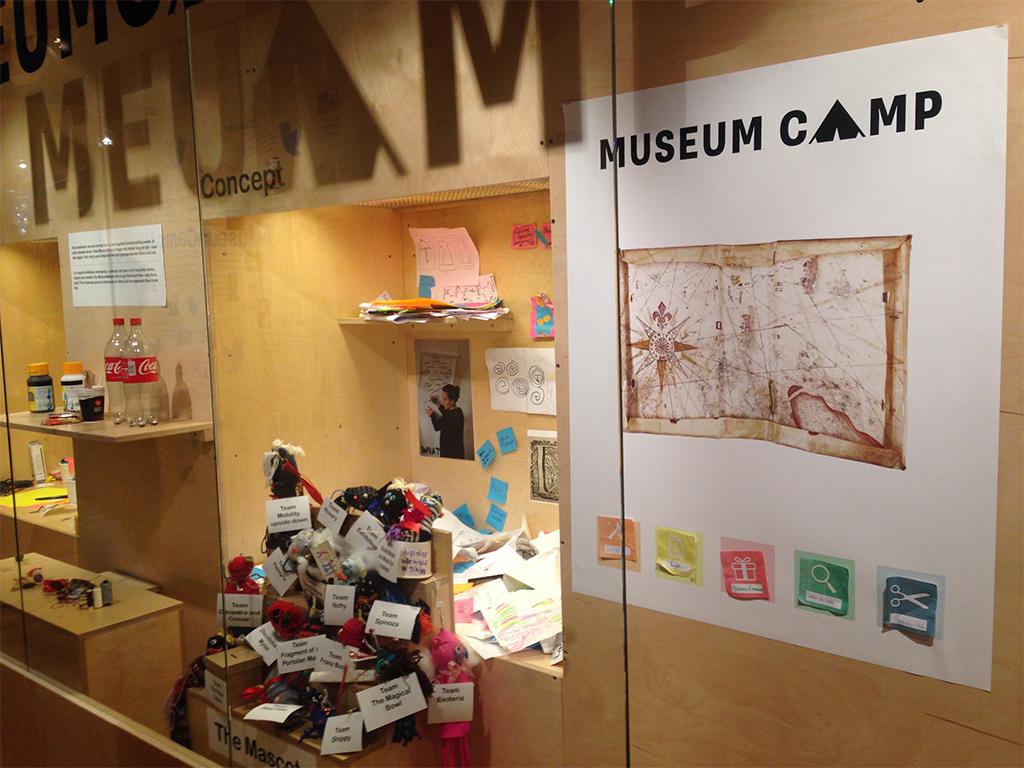June 5-7, the consortium partners of the meSch project came together for three days to share their insights, build scenarios, and set future goals. Within the project, we want to create a toolkit that facilitates curators and educators in creating adaptive and smart exhibits for their museum visitors.
The last day, Waag hosted a scenario-building workshop in Amsterdam. Five teams, each consisting of a mix of consortium partners, placed a chosen concept in context by developing a scenario for a museum visit. Within each team, the curator of the museum was in charge. In this way, we ensured that the user perspective was taken along in the process.
Prior to the workshop, the partners delivered starting points for building the scenarios. The museum partners (from Museon and Allard Pierson Museum) guided us all through their exhibition spaces and storage rooms. They clarified their needs and wishes for the toolkit. The developing partners presented their concepts and prototypes, which we evaluated in the same five teams. These prototype evaluations provided the team members a common ground for idea generation.
Creating scenarios
During the workshop, each team developed a scenario explaining the way a visitor experiences a museum. Basis for these scenarios were the concepts chosen by the teams. These concepts were for example about finding your way in a museum, exploring additional information about objects, and serendipity.
At the end of the day, each team delivered a short movie of this scenario. The museum partners, as users of the future toolkit, were put in a leading position. As the day was short, we guided each team through the process with a canvas developed especially for this workshop. Discussion among the partners and quick decision-making about the concept and its scenario were key. Each scenario had to include a beginning and an end, a description of the visitors’ experience, a clue about the curators role and interaction with two artifacts in the exhibition space.
For the next partner meeting in Italy, we will elaborate these five scenarios including the curators’ experiences and museum content, the visitors’ experiences, and the needed technology.


